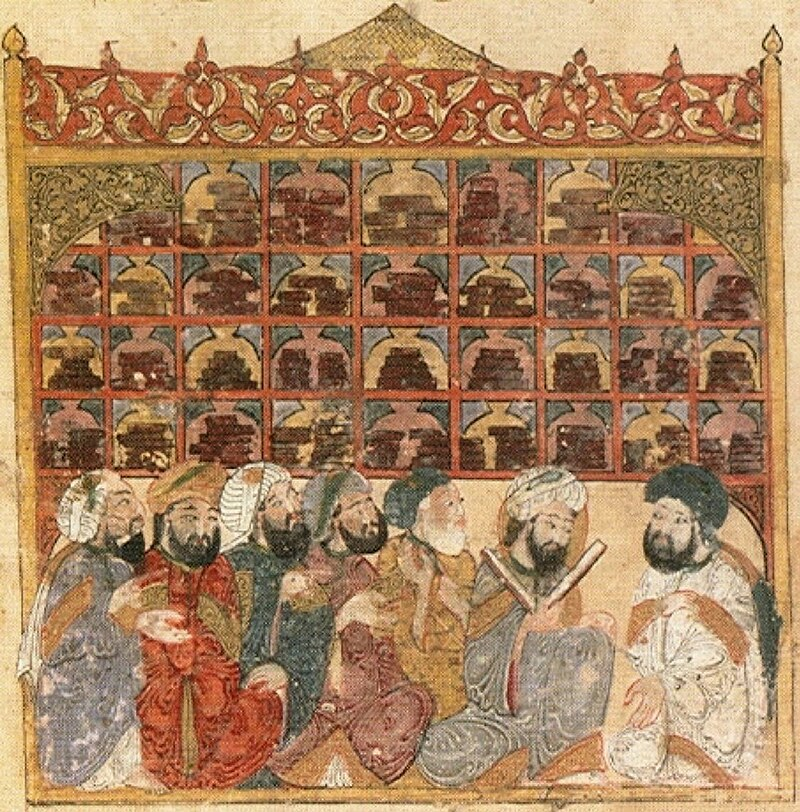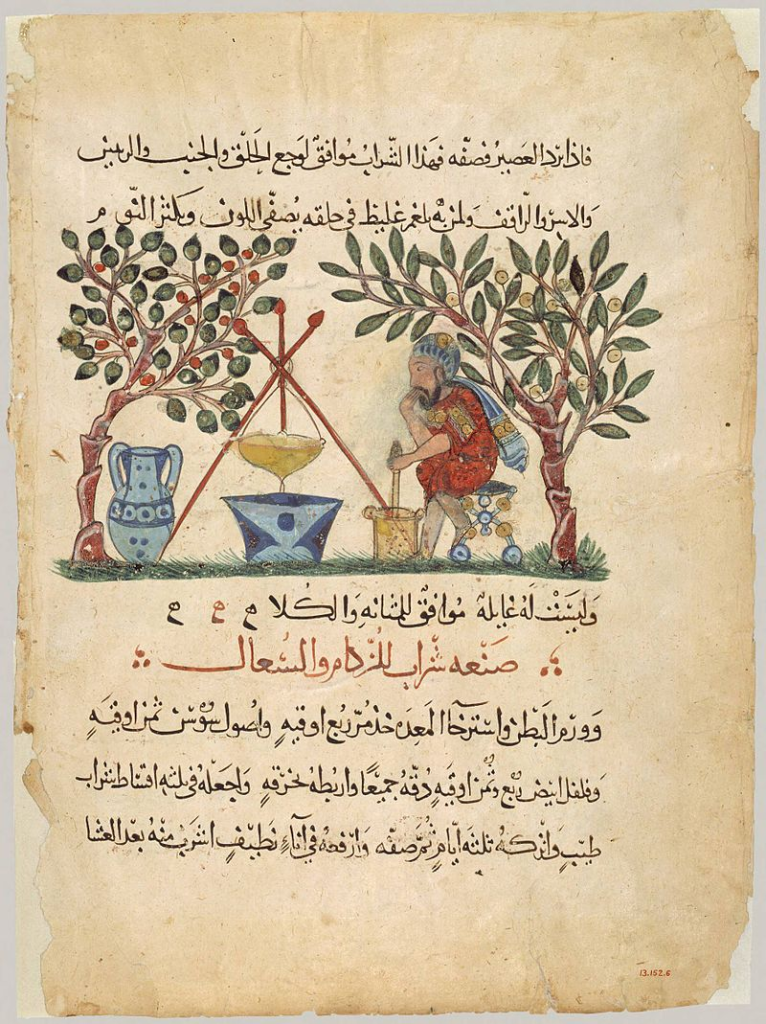Arab Astronomers: The Celestial Tapestry That Shaped Our Modern Understanding of the Cosmos
The Celestial Tapestry: How Arab Astronomers Shaped Our Understanding of the Cosmos
- March 6, 2025
- 3:22 pm
- István Csányi
Islamic Astronomy: A Legacy of Innovation and Discovery
For millennia, humanity has gazed at the stars, seeking to unravel the secrets of the cosmos. Our understanding of the heavens results from a vast, interconnected tapestry of knowledge spanning cultures and centuries—one in which Arab astronomers played a pivotal role that often goes unrecognized in Western narratives.
The night sky served as humanity’s first classroom—an endless expanse where myths, mathematics, and cosmic curiosity intertwined. From the shores of the Aegean to the deserts of Baghdad, ancient astronomers charted the heavens not in isolation but through a vibrant exchange of ideas that transcended borders, languages, and epochs. This series, The Celestial Tapestry, unravels the interconnected legacy of astronomical innovation, revealing how the brilliance of scholars from diverse cultures wove a shared narrative of discovery.
Key Takeaways About Islamic Astronomy
- Arab astronomers preserved, enhanced, and transformed Greek, Indian, and Persian astronomical knowledge during Europe’s Dark Ages
- Major innovations by Islamic scholars include precise star catalogs, the development of observatories as research institutions, and mathematical models that corrected Ptolemaic errors
- This interconnected history of astronomy spans cultures and centuries, with knowledge flowing across borders through translation movements and trade networks
- Oman’s strategic location made it a crossroads for astronomical knowledge exchange, with contributions to celestial navigation
- Arab astronomical techniques, instruments, and mathematical approaches continue to influence modern science and technology
Why This Series on Islamic Astronomy Matters
Arab astronomy’s history is not a linear tale of isolated breakthroughs but a mosaic of cross-cultural collaboration. Greek metaphysics merged with Babylonian data, Alexandrian engineering inspired Persian algebra, and Abbasid-era discoveries fueled Europe’s Renaissance. When European scientific progress stalled during the Middle Ages, the intellectual centers of Baghdad, Cairo, and Córdoba illuminated the path forward. By isolating eras or cultures, we miss the connective tissue—the gears of the Antikythera Mechanism echoing in Al-Khwarizmi’s algorithms or Ptolemy’s library preserving ideas that Arab astronomers later mathematized.
The House of Wisdom (Bayt al-Hikma) in Baghdad became the intellectual nexus where Babylonian star catalogs met Greek geometric models, all enhanced by Persian mathematical innovations and Indian numerical systems. These Arab astronomers stood not just on the shoulders of giants but created an intellectual bridge spanning continents and millennia.
The political landscape that fostered this golden age of Arab astronomy was equally interconnected. The Abbasid Caliphate, stretching from North Africa to Central Asia, created conditions where knowledge could flow freely across formerly separate regions. Trade routes that carried silk and spices also transported manuscripts and ideas. A merchant might carry astronomical tables from India to Baghdad alongside his textiles, while a diplomat returning from Constantinople might bring copies of Greek treatises in his diplomatic pouch.
This vast empire, with its diverse population, created a uniquely cosmopolitan intellectual environment. In the courts of caliphs, Christian, Jewish, Sabian, and Muslim scholars collaborated without the religious boundaries that often impeded scholarly exchange in medieval Europe. When al-Khwarizmi (780-850 CE) developed his astronomical tables (zijes), he drew freely from Persian, Indian, and Greek traditions, creating a synthesis that transcended any single cultural lineage.
The Translation Movement: Seeds of the Renaissance in Islamic Astronomy
In 8th century Baghdad, Caliph al-Ma’mun had a dream. The philosopher Aristotle appeared to him, igniting a passion for knowledge that would change the course of human history. Under his patronage, the Translation Movement began—a systematic effort to collect and translate scientific and philosophical texts from across the known world.
“We must gather the fruits of wisdom wherever they grow,” al-Ma’mun declared, “for knowledge knows no homeland but belongs to all humanity.”
This movement wasn’t merely about preservation. As texts by Ptolemy, Euclid, and Aristotle were translated, they were scrutinized, corrected, and expanded upon. The Almagest (al-Majisti in Arabic)—Ptolemy’s masterwork on astronomy—found not just safety but renewal in Arab hands.
The scale of this translation effort was unprecedented in human history. By the 9th century, nearly all significant Greek scientific and philosophical works had been translated into Arabic. This systematic translation effort created a foundation for scientific advancement. Unlike the haphazard preservation of classical texts in European monasteries, the Translation Movement approached knowledge acquisition as a coordinated imperial project.
The Stars Speak Arabic: A Legacy of Innovation
Look up at the night sky. Alpha Centauri (Rigil Kentaurus). Aldebaran (“the follower” in Arabic). Altair (from al-nasr al-tair, “the flying eagle”). Betelgeuse (from yad al-jauza, “hand of the central one”). The names of these stars reveal their heritage—they are Arabic in origin, a linguistic testament to the contributions of Arab astronomers to our understanding of the cosmos.
When Ibn al-Haytham (965-1040 CE)—known in the West as Alhazen—wrote his Kitab al-Manazir (Book of Optics) in the 11th century, he didn’t just advance understanding of light and vision. He established the experimental scientific method centuries before European scholars would claim it as their own innovation.
“The seeker after truth is not one who studies the writings of the ancients and, following his natural disposition, puts his trust in them,” he wrote, “but rather the one who suspects his faith in them and questions what he gathers from them.”
This skeptical approach transformed astronomy from a theoretical pursuit into an empirical science, laying groundwork that would eventually support Copernicus and Galileo.
Ibn al-Haytham’s journey illustrates the complex political realities that often shaped scientific advancement in Islamic astronomy. Born in Basra, he was recruited to Egypt by the Fatimid Caliph al-Hakim to control the Nile’s flooding. When the project proved impossible, Ibn al-Haytham feared the Caliph’s notorious wrath and feigned madness to avoid execution. Under house arrest, he conducted the optical experiments that would revolutionize science, demonstrating how light travels in straight lines and explaining how images form in the eye—foundational concepts for astronomical observation itself.

The Baghdad Sky Observers: Birth of the Observatory Tradition in Islamic Astronomy
In 829 CE, beneath the star-filled skies of Baghdad, al-Ma’mun established the first permanent astronomical observatory (marsad) in the Islamic world. Here, al-Battani (858-929 CE) would measure the solar year with unprecedented precision, coming within minutes of our modern calculations.
Al-Battani did not work in isolation. His astronomical observations and mathematical innovations built upon earlier work and influenced later Arab astronomers like al-Sufi. Together, these scholars observed the stars that al-Sufi would later document in his Kitab suwar al-kawakib (Book of Fixed Stars) – a catalog so accurate that astronomers still consult it today.
“Each point of light above us,” al-Battani wrote, “contains secrets that await those patient enough to observe them.”
This emphasis on patient, precise observation would become the hallmark of Arab astronomy – a tradition that produced star catalogs of remarkable accuracy and mathematical models that addressed the flaws in Ptolemy’s system.
The observatories established across the Islamic world represented a revolutionary development in astronomy. Unlike the individual scholars of antiquity who worked with portable instruments, these institutions fostered collaborative research programs sustained across generations. The Shammasiyah Observatory in Baghdad and later the Maragha Observatory in Persia established models for institutional science that would not appear in Europe until centuries later.
At the heart of Islamic observational astronomy was a concern for practical application. The religious obligation to pray at specific times and to determine the direction of Mecca (qibla) created real-world problems that astronomy could solve. Timekeeping and directional instruments became increasingly sophisticated as Arab astronomers applied their theoretical knowledge to these practical needs.
The Maragha Revolution: How Arab Astronomers Challenged Ptolemy
By the 13th century, the astronomical center had shifted to Maragha in present-day Iran. Here, under the direction of Nasir al-Din al-Tusi (1201-1274 CE), a team of Arab astronomers from across the Islamic world – and even a Chinese scholar named Fao Munji – created new mathematical models of planetary motion.
Al-Tusi invented a geometric construction known as the “Tusi couple” (a mathematical device showing how straight-line motion could be produced by combining circular motions), which resolved major problems in Ptolemy’s planetary theory. This innovation appeared nearly identical in Copernicus’s work centuries later – a connection that suggests knowledge transmission rather than coincidence.
Ibn al-Shatir (1304-1375 CE), working in Damascus, refined these models further. His diagrams of planetary motion bear a striking resemblance to those later produced by Copernicus, though the latter never acknowledged this influence.
The Maragha school produced the Zij-i Ilkhani (Ilkhanic Tables), astronomical tables of remarkable accuracy. These tables correctly calculated the precession of the equinoxes at 51 arcseconds per year, remarkably close to the modern value of 50.2 arcseconds. Such precision required systematic observation over decades, demonstrating the value of institutional science over individual genius.
From Baghdad to Bologna: The Knowledge Transfer of Arab Astronomy
As the Islamic Golden Age began to wane, its intellectual treasures found new homes. In the city of Toledo, teams of Jewish, Christian, and Muslim scholars translated Arabic texts into Latin, making them accessible to European readers.
Gerard of Cremona (1114-1187 CE) spent decades in Toledo, translating over 80 works, including Ptolemy’s Almagest – not from the original Greek, which was lost to Europe, but from the Arabic version preserved and enhanced by generations of Arab astronomers.
The most significant astronomical work translated in Toledo was al-Battani’s “Kitab al-Zij” (Book of Astronomical Tables), which reached Europe under the Latin title “De Motu Stellarum” (On the Motion of the Stars). Robert of Chester’s translation of al-Khwarizmi’s astronomical and mathematical works introduced Arabic numerals to Europe, fundamentally changing how astronomers would calculate and record their observations.
These translations transformed European astronomy. When university curricula were established at institutions like Paris and Oxford in the 12th and 13th centuries, Arabic astronomical works – or Greek works preserved through Arabic translations – formed the core of the quadrivium (the mathematical part of the liberal arts, including arithmetic, geometry, music, and astronomy).
The Peninsular Connection: Arab Astronomy in Oman and Beyond
The Arabian Peninsula has a special place in this astronomical story. Long before the Islamic Golden Age, the harsh desert environment had made celestial observation necessary for survival. Bedouin travelers navigated by the stars, developing intricate knowledge of celestial patterns. This indigenous astronomical knowledge formed a foundation that later Arab scholars would build upon.
Oman’s strategic location – positioned between the Persian Gulf, the Arabian Sea, and the Indian Ocean – made it a natural crossroads where astronomical knowledge from different traditions could converge. Omani sailors developed sophisticated celestial navigation techniques that enabled them to establish trade networks extending from East Africa to China centuries before European explorers ventured beyond the Mediterranean.
During the Islamic Golden Age, Omani scholars contributed to the broader astronomical tradition. The 10th-century navigator Ahmad ibn Majid compiled navigational texts that integrated astronomical knowledge from Arab, Indian, and Chinese sources, containing star charts and calculations essential for maritime navigation.
In modern Oman, this astronomical legacy is being reclaimed through educational initiatives and observational facilities. The Sultan Qaboos University maintains an active astronomy program, while amateur astronomical societies have emerged across the country. The development of new observatories, including facilities in remote desert locations that offer pristine viewing conditions, positions Oman to once again contribute to our understanding of the cosmos.
The Enduring Legacy of Arab Astronomy Today
The influence of Arab astronomy extends far beyond historical interest – it forms the foundation of our modern understanding of the cosmos. The mathematical tools developed for tracking celestial bodies evolved into the computational methods we use today. The observational techniques refined in Baghdad and Damascus set standards for precision that scientists still strive to uphold.
The astrolabe (asturlab) – perfected by Arab astronomers – became the world’s first analog computer, capable of solving complex astronomical problems through mechanical means. Its principles influenced the development of navigational instruments that would later guide European explorers across oceans. The celestial coordinate systems developed during the Islamic Golden Age remain fundamental to how we map the heavens.
The methodological legacy of Arab astronomy may be its most significant contribution to modern science. Ibn al-Haytham’s insistence on experimental verification rather than theoretical speculation established a cornerstone of the scientific method. When he wrote, “The duty of the man who investigates the writings of scientists, if learning the truth is his goal, is to make himself an enemy of all that he reads,” he articulated a principle of skeptical inquiry that remains essential to scientific progress.
Even our most sophisticated modern technologies have roots in this tradition. The astronomical algorithms that guide space telescopes like Hubble and James Webb employ mathematical principles refined by medieval Arab astronomers. The star-tracking systems used in satellite navigation draw on coordinate systems developed during the Islamic Golden Age.
Journey Through the Celestial Tapestry: Upcoming Posts About Astronomical History
In this series, we will explore the vibrant tapestry of astronomical knowledge that connects diverse cultures and epochs. Each post will illuminate a chapter in this interconnected story:
- Thales of Miletus – How a philosopher’s claim that “water is the essence of all things” redefined cosmic inquiry.
- The Antikythera Mechanism – Reverse-engineering humanity’s first analog computer, whose gears would find echoes in later astronomical devices across cultures.
- Haron of Alexandria – The forgotten engineer whose automata foreshadowed mechanical astronomy and influenced later Arab mechanical innovations.
- Ptolemy I Soter – Building the ancient internet: How the Great Library enabled 800 years of discovery and preserved knowledge that would later reach Baghdad.
- Al-Khwarizmi – Why algebra was astronomy’s silent partner, providing mathematical foundations that transformed celestial understanding.
- Ibn al-Haytham – Challenging Aristotle: The experimentalist who imagined gravity 600 years before Newton and revolutionized scientific methodology.
- Arab Astronomers – The untold story of elliptical orbits long before Kepler, revealing how scholars at Maragha resolved flaws in Ptolemaic models.
Additional topics we may explore include:
- The Babylonian Lunar Databases – How cuneiform tablets predicted eclipses millennia before Greece.
- Hypatia of Alexandria – The mathematician-astronomer erased by history.
- Ulugh Beg’s Samarkand Observatory – The Islamic Golden Age’s precision revolution.
As we gaze at the night sky today, we participate in humanity’s oldest intellectual pursuit. The stars above us are the same ones that captivated our ancestors across cultures and centuries. They remind us that knowledge, like light, travels vast distances to illuminate minds regardless of where they dwell.
Join us as we journey through the golden age of Arab astronomical exchange, a legacy written in the stars that continues to shape our understanding of the universe today.
Academic References
Books
- King, D. A. (2012). Islamic Astronomy and Geography. Routledge.
- Surveys Islamic contributions to observational astronomy, instrumentation, and sacred geography. Discusses the role of observatories like Maragha and the development of qibla calculations.
- Saliba, G. (1994). A History of Arabic Astronomy: Planetary Theories During the Golden Age of Islam. NYU Press.
- Analyzes Arabic planetary models, including critiques of Ptolemaic systems and the Tusi couple. Argues for direct influence on Copernican heliocentrism.
- Blake, S. P. (2024). Astronomy and Astrology in the Islamic World. Edinburgh University Press.
- Traces the evolution of celestial sciences in Islamic societies, emphasizing mathematical innovations and observatories like Samarkand.
- Al-Sufi, A. R. (964). The Book of Fixed Stars.
- Landmark star catalog synthesizing Ptolemaic data with Arabic observations. First recorded mention of the Andromeda Galaxy.
Journal Articles
- Astroislamica: Journal of Islamic Astronomy (2024). Vol. 3, Issue 2.
- Recent studies on ethnoastronomy, calendars, and crescent visibility. Contributions from institutions like UIN Walisongo and IAIN Lhokseumawe.
- King, D. A. (2013). “Islamic Astronomy.” The Cambridge History of Science.
- Overview of Islamic astronomy’s role in bridging Greek and Renaissance science, emphasizing observational techniques.
- Abdallah, A. (2016). “History of Mathematics from the Islamic World.” Governors State University Theses.
- Examines algebraic and arithmetic advancements by Al-Khwarizmi and Al-Uqlidisi and their practical applications.
Archaeology & Interdisciplinary Studies
- Walker, B. J. (Ed.). (2024). Journal of Islamic Archaeology.
- Explored material culture and astronomical instruments like astrolabes. Includes studies on Islamic scientific manuscripts.
- Milstein, R. (2010). An Introduction to Islamic Archaeology. Edinburgh University Press.
- Discusses archaeological evidence of observatories and navigational tools in Oman and the Persian Gulf.
Mathematics & Translation Movements
- CSAMES (2020). Islamic Mathematics. University of Illinois.
- Details Al-Khwarizmi’s algebra, decimal positioning, and their transmission to Europe via Toledo’s translation schools.
- De Vaux, C. (1893). Les traductions arabes de textes grecs.
- This is a classic study on the Abbasid-era translation movement and its preservation of Greek texts like Ptolemy’s Almagest.

Business Development at Machine Intelligence Zrt. Innovation professional with 25+ years of experience in IT solutions and product strategy. Science history enthusiast and digital fabrication hobbyist specializing in 3D printing, laser cutting, and CNC. Holds MSc degrees in Chemistry and Physics from the University of Szeged.




